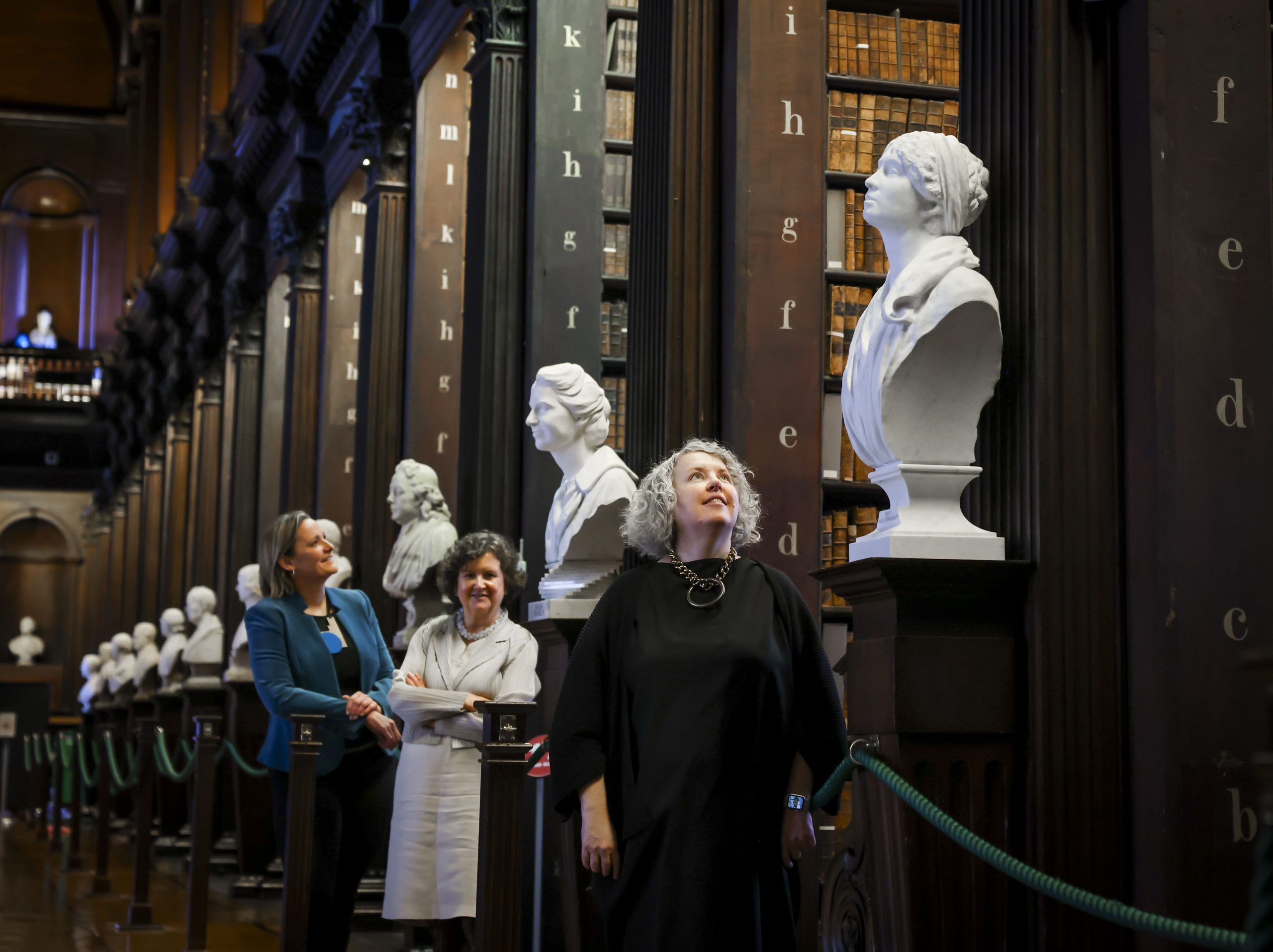College has installed four new busts in the Old Library’s Long Room, honouring Ada Lovelace, Lady Gregory, Rosalind Franklin, and Mary Wollstonecraft.
The sculptures are the first to be commissioned in over a century, as well as the first to depict women.
They were sculpted by artists Maudie Brady (Ada Lovelace), Rowan Gillespie (Mary Wollstonecraft), Vera Klute (Rosalind Franklin) and Guy Reid (Augusta Gregory).
The busts were unveiled today by Chancellor Dr Mary McAleese at a ceremony in the Long Room. They will be displayed along the line of 40 marble sculpture-busts in the Long Room, which previously all depicted male figures, marking an important step towards equal representation of women on campus.
Speaking today, Provost Linda Doyle said that “while it is important to respect tradition, it is also important to break tradition,” and thanked those involved in the creation and installation of the new pieces.
She added: “Sculptures are an iconic feature of Trinity’s Long Room, and I hope that the inclusion of these four outstanding women is the furthering of a collective recognition of the incredible contribution of women across many fields.”
Librarian Helen Shelton said: “On this auspicious day, St Brigid’s Day, we celebrate women’s scholarship with these sculptures in the Long Room of the Old Library. Their individual contributions to knowledge and to society will now be permanently honoured in this cathedral of learning at the heart of Trinity.”
Mary Wollstonecraft (1759-1797) was a pioneering women’s rights advocate, and author of A Vindication of the Rights of Women (1792), often considered a foundational text for women’s rights movements. She defended the rights of young women to be fully educated, and deemed it a necessity that women and men be allowed to contribute to society equally.
Ada Lovelace (1815-1852) was a mathematician best known for her notes on Charles Babbage’s design for the first analytical engine (general-purpose computer), which included an algorithm for computing Bernouilli numbers and presaged computer-generated music. She was the first to publish recognition of the capacity of a computer to make logical deductions about both numerical and non-numerical objects.
Augusta Gregory (1852 -1932) was one of the most significant figures of the Irish Literary Revival. Her work as a writer, dramatist, theatre-founder, champion of the Irish language, translator, folklorist, and social commentator helped define and give voice to the tenets of cultural nationalism in the years leading up to, and after, the establishment of the Irish Free State.
Rosalind Franklin (1920-1958) was a prolific scientist whose experimental work on virus structures and expertise in x-ray crystallography generated key measurements for the uncovering of DNA structure. Her later work had an equally important role in revealing the structure of RNA viruses, including early work on the Polio virus.
Plans to commission the sculptures were announced in 2020.
The four women were chosen from over 500 suggestions by a panel composed of the provost, former Registrars, the Librarian and Academic and Collections experts and other senior staff.
An “In Conversation” event with the artists and Trinity champions of the scholars will take place in the Trinity Long Room Hub Arts and Humanities Institute tomorrow at 12pm.






